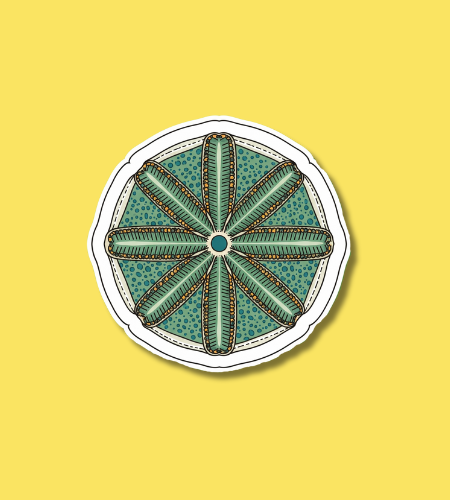National Diatomaceous Earth Day is celebrated on August 31 each year, shining a light on the curious natural mineral made from microscopic ancient algae and the many everyday ways it’s used—from filtration to gentle household tasks to garden care.
Diatomaceous earth is a soft, naturally occurring sedimentary rock formed from the fossilized remains of diatoms, a type of microscopic aquatic organism.
History of National Diatomaceous Earth Day
Diatomaceous earth, often shortened to D.E., forms from the fossilized remains of diatoms—tiny single-celled algae whose silica “frustules” settle into deposits over time. Mined, milled, and refined, this mineral found its way into industries such as beverage and pool filtration, polishing, absorbents, and certain insect-control products. As public interest in simple, practical materials grew, so did curiosity about D.E. and the science behind it.
The observance itself is modern. Industry storytellers and calendar editors fixed the date on August 31, and sources widely credit EP Minerals with championing the day in the mid-2010s to recognize both the diatom and the mineral it creates. From there, articles and annual reminders helped turn a niche topic into a friendly, once-a-year prompt to learn and share.
Many people encounter diatomaceous earth (DE) as a reliable filter aid for pools or as a natural insect-control product for homes and gardens. Biologists prize the microscopic algae that create it—diatoms—for their enormous contribution to the planet’s oxygen cycle, while materials scientists study the diatoms’ ornate silica skeletons (frustules) for their intricate, ultra-porous architecture and remarkable strength. National DE Day shines a light on both the organism and the extraordinary mineral it leaves behind.
DE is a sedimentary rock found in major deposits worldwide and mined in countries such as the United States, Mexico, Chile, Peru, France, Spain, Denmark, and China. Although diatoms still accumulate today, many large deposits formed millions of years ago as diatoms settled to lakebeds and seafloors; the organic material weathered away, leaving beds of pure opaline silica. In the U.S., significant deposits originated in ancient lakes in California, Nevada, Oregon, and Washington, as well as in marine settings along the coasts of North and South America.
Why is National Diatomaceous Earth Day important?
It’s a neat bridge between nature and everyday life. D.E. starts as microscopic life in water and ends up helping filter our drinks, clarify syrups, and keep pools sparkling—proof that big usefulness can come from minimal beginnings. Taking a minute to notice that journey makes science feel close to home.
It’s also a reminder to stay curious about common materials. Once you know what diatomaceous earth is, the label on a bag of filter aid or a bottle of garden product suddenly makes more sense. The day nudges us to read, ask good questions, and use products thoughtfully instead of on autopilot.
- It connects kitchen-table life with natural history.
- It celebrates a mineral that quietly solves real problems.
- It encourages reading labels and using products wisely.
- It makes science approachable for kids and grownups alike.
- It turns a “what is that?” into “oh, that’s useful.”
How to celebrate National Diatomaceous Earth Day
Keep it simple and practical. Read a short explainer about D.E., then look around for where it shows up in your world—pool filters, brewing and winemaking stories, or a garden aisle product. If you try something new, follow the directions on the package, avoid kicking up dust, and store products safely after use.
If you’re more of a science fan, go the curiosity route: pull up a photo of diatoms under a microscope, learn what a “frustule” is, and share one cool fact with a friend. You could even plan a tiny home demo—like comparing the clarity of two liquids filtered through different media—to see why D.E. is prized for filtration.
- Skim an article on what diatomaceous earth is and where it’s used.
- Spot D.E. on labels in the pool, brewing, or pantry aisles.
- Follow package directions carefully if using a garden product.
- Add D.E. to your “materials I actually understand” list.
- Share a photo of diatoms and one fun fact with your group chat.
National Diatomaceous Earth Day Dates Table
| Year | Date | Day |
|---|---|---|
| 2026 | August 31 | Monday |
| 2027 | August 31 | Tuesday |
| 2028 | August 31 | Thursday |
| 2029 | August 31 | Friday |
| 2030 | August 31 | Saturday |
Subscribe to our newsletter and never miss a holiday again!

